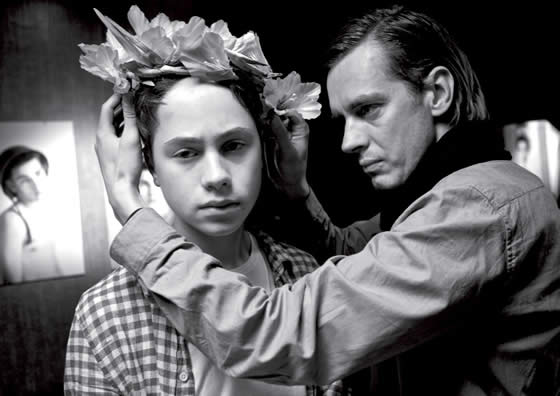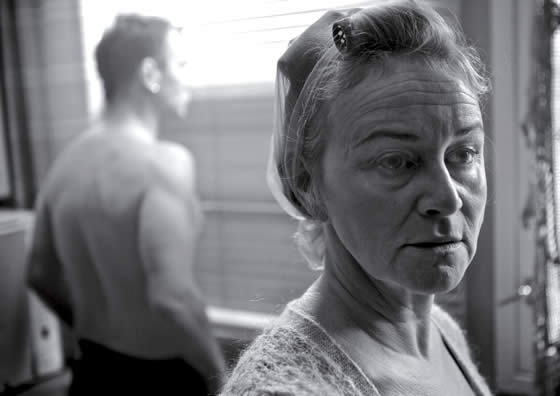 CONCRETE NIGHT, Finland’s OSCAR Entry is about S I M O, a 14-year-old boy in search of himself and unable yet to decode and interpret life around him. He and his big brother Ilkka are the sons of a helpless and unpredictable single mother. Their chaotic home is located deep in the heart of a concrete jungle in Helsinki. Ilkka has one day of freedom left before starting his prison sentence and their mother persuades Simo to spend this last night with him.
CONCRETE NIGHT, Finland’s OSCAR Entry is about S I M O, a 14-year-old boy in search of himself and unable yet to decode and interpret life around him. He and his big brother Ilkka are the sons of a helpless and unpredictable single mother. Their chaotic home is located deep in the heart of a concrete jungle in Helsinki. Ilkka has one day of freedom left before starting his prison sentence and their mother persuades Simo to spend this last night with him.
During the course of the day and night spent roaming around Helsinki, the brothers witness incidents they would rather not have seen. Vulnerable Simo is not equipped to justify what he sees or delude himself – seeing things accurately as they are. To him, the unfiltered world seems unbearable. Finally a casual encounter with a photographer, whose intentions Simo misreads, launches him into blind fear. In the panic-stricken violence that ensues, Simo finds his missing identity, his true face.
Director Pirjo Honkasalo wrote the film script based on the hard-driving novel Concrete Night by Pirkko Saisio. Published in 1981, the novel foreshadowed the disconnected world we live in today.
Bijan Tehrani: My first question is when you first read this book, what originally inspired you to make a move from this book?
Pirjo Hankasalo: The book came out 30 years ago, I read it immediately and I was really taken by the book and particularly the main character and I think that the book beautifully explains the mind of a 14 year old boy, the way he is at that age and how fragile his ego is and how he can be manipulated by everything around him and how dangerous this part of your life is and how it will determine what will happen to you later and only from this point do you start to build the protection between you and the world, this point you can’t lean on your parents anymore and you have no protection against what is put on your from the world around you and so this mind of the boy fascinated me. But then life took me in a totally other direction and I started to get international invitations for documentaries, I was invited to direct in India and by the Japanese to direct in Japan and the Soviet Union, so time passed and I noticed that I was mainly making documentaries, finally I came to the point of shooting Ito, the diary of an urban priest in Tokyo and I felt that this part of my life would be documentaries had come to a certain end. Ten years ago I casted the actress for this, but still I went off to make another documentary, but eventually I took the script from my bookshelf and decided that now I would make this film.
BT: You also mentioned once that writing the screenplay based on this book was easy because it was not that thick and it was not too much of a story or an event happening in it therefore it left a lot of room for making a movie.  PH: This was very important for me because I thought that by making the most expensive film ever made in Finland, which was two and a half hours of historical film and after that I realized that actually the book was closer to a short story rather than a novel, and there was this big epic work, and that at two hours, there were still several climaxes and in the film there was no time to build up any momentum. So the storyline in this book was very simple and the author of the book was not involved in any way and I had the freedom to make the film I wanted to.
PH: This was very important for me because I thought that by making the most expensive film ever made in Finland, which was two and a half hours of historical film and after that I realized that actually the book was closer to a short story rather than a novel, and there was this big epic work, and that at two hours, there were still several climaxes and in the film there was no time to build up any momentum. So the storyline in this book was very simple and the author of the book was not involved in any way and I had the freedom to make the film I wanted to.
BT: How did you go about casting the film?
PH: The crazy thing was that I had an audition ten years ago for the role of the older brother, a very important character. Back then I chose Jari Virman for the role. When I started actually making the film a few years ago, I wanted to see how he looked like. I chose him again for the same role after ten years; of course the 14 year old boy I had chosen ten years ago was now twenty four, so that was impossible, so I auditioned a lot of young boys. This boy Johannes Brotherus who is playing Simo, completely stood out from the rest of the boys. I never thought about making the actors act, I sat them down and let the boys listen to the music, it was heavy classical music, but this boy was the only one who solved the situation by going inward, into himself and that was what we needed for the character.
BT: The film is so deeply rooted in reality that it gives the effect that this is something that is happening in our world right now.
PH: One reason why I chose to make it black and white, was because I thought that what happens in the mind of this boy should be a mystery — whether it takes place in the 80s or now. When n we face these dangers, how do we learn how to handle the world around us? It is showing the reality of real life, but it is very obviously seen by this boy how the young mind is seeing things how they actually are. Is it is too much so they have to create a theater to look at this world? Without a filter like that, they would go insane.
BT: I found that color movies can be very distractive most of the time and having black and white helps us to focus on the actual subjects.
PH: You have to have the courage to take away things and not add things, to take out as much as you have courage to take and you hope that in the head of the viewer it will resonate with them, the more you have courage to take away is the stronger film you will make.
BT: What do you think of the films chances at the Academy Awards and how much do you think a nomination will help the film for a US distribution?
PH: Of course I want to be optimistic, but I understand that this is an art-house film and maybe it does not follow the norm that is common to American audiences. On the other hand, you don’t want to underestimate the audience because you can find that they are more open minded that you think. You don’t want to close your mind and your hear just because a film is different, we all live through this biological age and this film should be common to all of us.

